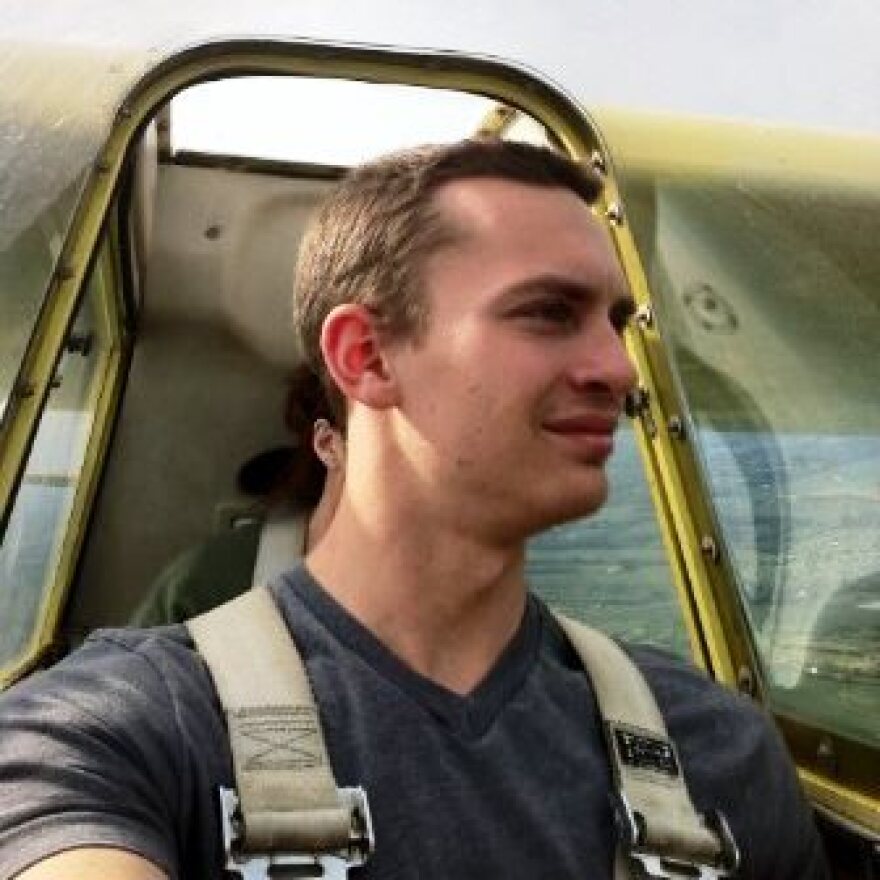Flying in America changed after airline deregulation in 1978. It evolved toward dominance by big carriers along a path of consolidation and centralization of services. Now, there are handful of national ‘hub’ airports through which most passengers are routed for cost efficiency. And none of the major airports in our region is among them.
Part 4 of our series "Grounded," looks at where we go from here with air travel in and out of northeast Ohio.
Our big airports have been de-hubbed.
That sounds bad. But Cleveland Hopkins is still in business; so is Pittsburgh International. Each in its own way is recovering. And, branding consultant Loraine Kessler says damage to the region's image, as well as practical travel complications from dehbbing, will pass.

“Wouldn’t it be great, if we weren’t de-hubbed? Such a terrible term. Hubbing was a hangover from de-regulation. And the future of aviation is going to change, to a more agile linkage.”
Something(s) New
So what’s the actual shakeout from dehubbing? Economic researcher Christopher Nicak says it requires new ideas.

“People, should they hear about dehubbing, they shouldn’t worry. It would allow for additional innovation. Like, cooperation between airlines. And (it) will mimic what we see between cellular phone providers. They’re using each other’s satellites and cell towers, but everyone is getting better service.”
Airline analyst and economics professor Kerry Tan also sees the industry bringing forward new strategies because the dominant one of the de-regulation era, big-carrier consolidation, has run its course.

“We’ve got three now. We used to have eight. So, now we’re down to American, United and Delta. And I would be very surprised if this consolidation movement went further.”
Competition
The form new competition may take is emerging. Investors and airline operators outside of the established airports and markets are exploring opportunities from de-hubbing.
Mickey Bowman runs the operations of ADI, a specialty airline working toward launching the first regular passenger service from Youngstown-Warren Regional in more than a dozen years.
"There are going to be some relatively large markets that today you are asking passengers to make connections through hubs, or do things out of the way, that they might very well be willing to pay a little more for if they could do it on a direct basis. We think there may be an evolving model that allows us to do medium-size city to medium-size city, nonstop.”
Congressman Jim Renacci, whose 16th district includes the center of northeast Ohio is on the House General Aviation Sub-committee. He sees opportunity-driven innovation arising out of dehubbing, too.
“I am very concerned with the flights we’ve lost. I hope to see other airlines coming in. I like to see that competition coming in. That’s the benefit; there will be others coming in. I know, for instance, right now, there is a charter flight from Cleveland Burke (Lakefront) to Cincinnati.”
Spur to innovation
University of Cincinnati researcher Christopher Nicak, who grew up in Cleveland, uses some of those flights coming from Cincinnati’s Municipal Lunken Airport.
He says there is more innovation in the works.
“I think we’re seeing it in most transportation, in most industries. Uber, Lyft: those examples of innovative, technologies that, 10 years ago, you wouldn’t imagine. That kind of creativity is changing the way we are functioning regardless of whether major airlines retain their hubs.”
Foreign Airlines Competing at U.S. Airports?
There may be another possibility, something that could look like what we used to see in Cleveland and Pittsburgh: big airlines and massive operating centers,but with logos like Lufthansa, Cathay Pacific and Emirates Airline.

For that to happen, nearly a century of tradition and regulation allowing only U.S.-owned carriers to fly point-to-point within the U.S. would need to change. Lobbying for that has been active in Washington since at least 2012.
And, Mike Jacobson of Diebold says his company and other heavy air-travel users would back even such a fundamental and historic change, if it is well thought out and could reinvigorate our dehubbed airports.
“Diebold would welcome any sort of movement on that front to help improve travel coming in and out of the region, within whatever regulations there are. I mean, it’s a global economy, global completion. And we deal with it on a daily basis. So, anything that ameliorates travel in and out of our region would be welcome.”
Thirty Thousand Feet View
Overall, it appears that no matter the forms they take -- expanding low cost services, new commuter links, even foreign dehubbing -- will not mean the grounding of northeast Ohio’s economic development.





